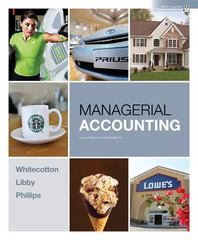Question
Research Molson Coors PART 1: UNDERSTANDING THE ENTITY Overview of the Company 1.What are the primary inputs and outputs of the company (products, services, raw
Research Molson Coors
PART 1: UNDERSTANDING THE ENTITY
Overview of the Company
1.What are the primary inputs and outputs of the company (products, services, raw materials)?
2.What is the size of the corporation (sales, assets, employees)?
3.Where is the company located (one area or multiple)?
4.Where is the company in its life cycle (development, decline)?
5.Are there any other persons/companies closely associated with the company (common ownership, related families)?
6.What image does the company present?
Overview of the Industry
1.What are the key economic factors about the industry?
2.Where is the company in its life cycle?
3.What are the key success factors, trends, and challenges for this industry?
4.How does your company compare with respect to these factors?
5.What notable accounting considerations are there for companies in this industry?
6.What particular legal or regulatory matters are of concern?
7.What social or environmental matters are of concern?
Financial Health of the Company Analyze the company's financial health by conducting an analytical review. An appendix detailing financial statement ratios may be of assistance. You should also consider:
1.Are there any noticeable trends (growing, declining)?
2.What are its sources of capital and financing (stocks, bonds, bank loans)?
3.How has the capital marketplace responded to the company?
4.What is the quality of earnings?
5.How does it compare with the rest of its industry?
PART 2: AUDIT PLAN
Based on your understanding of the entity prepare an audit plan. You should consider at minimum the following:
1.What are the material types of transactions and transaction cycles are involved?
2.What inherent risk factors are there for this industry? This company?
3.What are the high-risk areas from an audit perspective? Why?
4.What are the low-risk areas from an audit perspective? Why?
5.What specific audit procedures would you consider? What would their timing be? Be sure to identify the underlying assertions and evidence gathering technique.
6.What would you base your initial assessment of materiality on? What would your assessment be? Be sure to indicate who the users of the financial statements are and any qualitative factors which may influence your decision.
7.How will your audit effort be allocated among geographical areas? Among lines of business?
8.Will your audit require reliance on any experts? Which ones? What level of audit staff will be required for the audit?
9.What type of audit report was issued? Which GAAP and GAAS were used? Why?
Step by Step Solution
There are 3 Steps involved in it
Step: 1

Get Instant Access to Expert-Tailored Solutions
See step-by-step solutions with expert insights and AI powered tools for academic success
Step: 2

Step: 3

Ace Your Homework with AI
Get the answers you need in no time with our AI-driven, step-by-step assistance
Get Started


